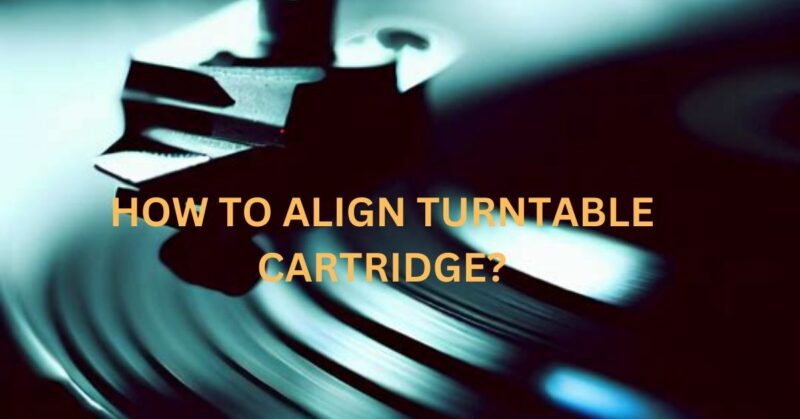The turntable has experienced a resurgence in popularity, with many enthusiasts rediscovering the warm and rich sound of vinyl records. One crucial aspect of ensuring optimal sound quality is properly aligning the turntable cartridge. The cartridge, which houses the stylus or needle, plays a vital role in accurately tracing the record grooves and converting the mechanical vibrations into electrical signals. In this article, we will provide you with a step-by-step guide on how to align a turntable cartridge, allowing you to maximize your vinyl listening experience.
Understanding the Cartridge
Before we dive into the alignment process, it’s essential to understand the cartridge’s components. The cartridge consists of a stylus, cantilever, magnets, coils, and a body. The stylus is the needle that tracks the record grooves, while the cantilever connects the stylus to the cartridge body. The magnets and coils generate electrical signals based on the vibrations picked up by the stylus. Proper alignment ensures that the stylus sits correctly in the record groove, allowing for accurate sound reproduction.
Tools Required
To align a turntable cartridge, you’ll need a few tools: a protractor (either digital or printable), a small screwdriver (usually provided with the cartridge), a blank record, and an anti-static brush. Additionally, a stable surface to work on and good lighting conditions are essential to ensure accuracy during the alignment process.
Step 1: Remove the Existing Cartridge
Begin by gently removing the existing cartridge from your turntable tonearm. Some cartridges may have a locking mechanism that requires a small screw to be loosened before removal. Ensure that you handle the cartridge delicately, avoiding unnecessary contact with the stylus or cantilever.
Step 2: Clean the Stylus and Record
Using an anti-static brush, carefully clean the stylus to remove any dust or debris. This ensures optimal contact with the record grooves. Additionally, clean the record surface to avoid any unwanted interference during the alignment process.
Step 3: Determine Overhang
The overhang refers to the distance between the center of the tonearm’s spindle and the stylus tip. Consult your turntable’s manual or manufacturer’s website to find the recommended overhang for your specific cartridge. Alternatively, you can use a protractor to measure the overhang accurately.
Step 4: Align Azimuth
Azimuth alignment ensures that the cartridge is parallel to the record grooves. Use a test record with an alignment guide or an azimuth alignment tool to adjust the cartridge’s angle. Make slight adjustments until the cartridge is parallel to the record’s surface.
Step 5: Adjust Vertical Tracking Angle
Vertical Tracking Angle (VTA) refers to the cartridge’s angle as it sits on the record surface. Some turntables allow VTA adjustment, while others have a fixed height. Follow your turntable manufacturer’s guidelines to ensure the correct VTA for your cartridge model.
Step 6: Set Tracking Force
Tracking Force is the downward pressure exerted on the stylus as it tracks the record grooves. Refer to the cartridge manufacturer’s specifications for the recommended tracking force. Use the small screwdriver to adjust the counterweight on the tonearm until the desired tracking force is achieved.
Step 7: Align the Cartridge
Using a protractor, align the cartridge using the recommended alignment points. Most protractors provide grids and reference points for
various alignment methods, such as Baerwald, Stevenson, or Löfgren. Align the cartridge so that the stylus aligns with the specific reference points for your chosen alignment method.
Properly aligning a turntable cartridge is crucial for achieving optimal sound reproduction and preserving the longevity of your vinyl records. By following the step-by-step guide outlined in this article, you can ensure that your cartridge is aligned accurately. Remember to consult your turntable and cartridge manufacturer’s instructions for specific recommendations, as different models may have unique alignment requirements. With a well-aligned cartridge, you can immerse yourself in the rich and authentic vinyl listening experience that has captivated generations of music lovers.

